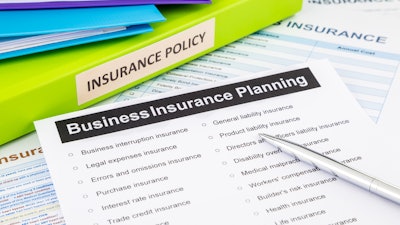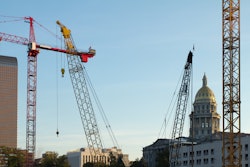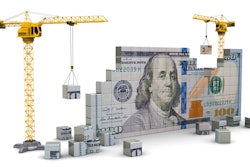
Construction projects run on a strict timetable. When there are disruptions, such as staffing issues, resource allocation, supply chain delays or downtime from damaged equipment, economic havoc can erupt. Being prepared for any type of interruption can ensure contractors, laborers and owners recover quickly with minimal impact to the financial well-being of the business. Nimbly identifying the loss, correcting the issue and returning to full capacity are key to damage mitigation.
Insurance policies are custom-designed to fit the individual needs of each operation. Working with your agent to secure a mutual agreement on the best coverage for your group is an evolving partnership and should be reviewed annually at minimum. Equipment and building depreciation, fuel price fluctuations and potential shifts in the timing and transportation of goods to market are all variables impacting the type and amount of insurance coverage you may wish to secure to protect yourself.
Look up your agent’s contact information. Pull up your insurance policy and review your coverage. Talk to others in the industry and compare notes. Put yourself in a position to be proactive rather than reactive. It is not if a loss occurs, but when. Being well-informed on the coverage you have on your operation will help navigate the road of recovery.
Some are fully insured. Some are self-insured. Some have a blended coverage where they cover the “small stuff” to avoid a high premium, or if the loss is less than the deductible. It is not a “one-stop shop” of information, but rest assured we all need to follow the same steps, no matter if it's handled in-house or with our insurance company.
When electing to report damages to an insurance carrier, the carrier will determine if the damage is “covered property” and if the loss was caused by a “covered cause of loss.” As a part of their determination, they may have you speak with an adjuster, assign your case to the Special Investigation Unit (SIU) or send out an independent appraiser. Either way, a determination of the who, what, when, why, and where of the loss will be made. As the insured, you may be contractually required to take certain steps in the event of loss or damage to “covered property.” Be prepared to:
- Notify the police if a law has been broken. If theft, vandalism, trespassing or any intentionally lawful act occurs, contact local law enforcement, and make a report.
- Give the insurance carrier prompt notice of the loss or damage, and provide descriptions of how, when and where the loss occurred so they can provide immediate guidance throughout the claim process.
- Take all reasonable steps to mitigate loss by protecting property from further loss. When possible, secure images to document damage and/or secure the damaged property for future examination.
- Retain all records for consideration in the settlement of your loss when expenses are incurred for emergency or temporary repairs.
Determining the cause and origin of the loss validates if the damage is a covered cause of loss as described in the policy. Additionally, the cause-and-origin determination dictates whether there is a right to recover damages from a responsible third party, also known as subrogation of damages. Retaining the damaged property in its current state and maintaining the chain of custody to explore potential liability and recovery of damages, including applicable deductibles, are vital to the determination process. If a third party is found liable for damages, the insurance company will seek recovery of the damages paid, including any deductible incurred by the policyholder.
The question of “who is at fault” is not always the first thing to figure out. Whether the damage is to your equipment, or your organization caused damage to somebody’s property or equipment, what is most important is the accurate determination of the value of the loss and the amount of time it will take to recover that loss.
Being well-informed on the value of property, goods, services, and equipment utilized in your operation can aid when determining your insurance needs and the premium associated with those coverages. Policies may include specific limits of insurance for covered property, offer a variety of covered causes of loss, allow specified dollar amounts for named property and provide a tailored menu of options to secure desired coverage and a budget-conscious premium.
Self-insuring property through higher deductibles, coinsuring with the carrier or excluding certain property from your policy are all viable options to help manage insurance costs. Reviewing those options with your insurance agent to gain an understanding of the financial impact to your bottom-line premium investment and your out-of-pocket expenses when a loss occurs will result in an optimal financial decision for your daily operation.
Contractors will continue to face challenges: variable fuel costs, availability of approved and qualified labor, shifts in local and national buyers, tariffs, pandemics, weather and catastrophic events. All these factors impact the overall profitability of the business. Being proactive in mitigating losses may save thousands of dollars in loss avoidance. Reviewing your insurance coverage annually with your agent to determine a plan specific to your operation will guide you in how to proceed should your operation experience a loss. A blend of well-planned insurance coverage, self-insurance through higher deductibles and coinsurance may offer lower costs while still providing peace of mind.



















